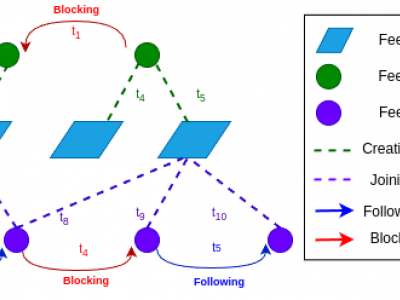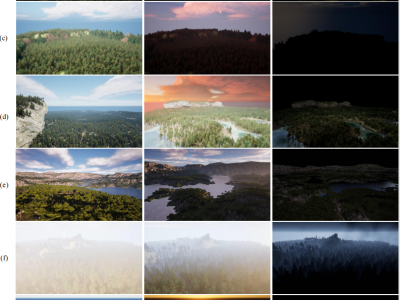Artificial Intelligence

Moroccan Dialect Emotion Recognition Dataset is a collection of voice records of people speaking Moroccan dialect in 5 states of emotion: Neutral, Happy, Sad, Angry and Fearful. The dataset has been collected in different Moroccan cities in 2024. Each recorder has 5 records per emotion class. The dataset contains 2000 record. The records are saved in .wav format, which is useful for signal processing with python libraries. The dataset is used for signal processing and emotion recognition using deep Learning models.
- Categories:
 559 Views
559 ViewsAnomaly detection in Phasor Measurement Unit (PMU) data requires high-quality, realistic labeled datasets for algorithm training and validation. Obtaining real field labelled data is challenging due to privacy, security concerns, and the rarity of certain anomalies, making a robust testbed indispensable. This paper presents the development and implementation of a Hardware-in-the-Loop (HIL) Synchrophasor Testbed designed for realistic data generation for testing and validating PMU anomaly detection algorithms.
- Categories:
 1552 Views
1552 Views
Seismocardiography (SCG) Signal Processing Dataset is a comprehensive collection of data samples to simulate the real-world application of the advanced technique in cardiac health monitoring. The dataset has been collected in different medical conditions of the patient in a real-time medical environment at varying timestamps. This dataset contains 1,000 samples collected over a period from 10 November 2023 to 10 January 2024, providing a robust timeframe in various conditions.
- Categories:
 722 Views
722 Views
This dataset consists of radiation pattern images of three distinct antennas: Patch, Monopole, and Dipole, sourced from existing literature. The database was developed using pixel sampling techniques to generate a large and diverse set of images. These images were further processed to include various geometric shapes, such as symmetric and asymmetric forms, as well as triangle and square shapes, with window sizes ranging from 2 × 2 to 100 × 100 pixels.
- Categories:
 221 Views
221 ViewsThe detection of the collapse of landslides trigerred by intense natural hazards, such as earthquakes and rainfall, allows rapid response to hazards which turned into disasters. The use of remote sensing imagery is mostly considered to cover wide areas and assess even more rapidly the threats. Yet, since optical images are sensitive to cloud coverage, their use is limited in case of emergency response. The proposed dataset is thus multimodal and targets the early detection of landslides following the disastrous earthquake which occurred in Haiti in 2021.
- Categories:
 1076 Views
1076 ViewsDecentralized social media platforms like Bluesky Social (Bluesky) have made it possible to publicly disclose some user behaviors with millisecond-level precision. Embracing Bluesky's principles of open-source and open-data, we present the first collection of the temporal dynamics of user-driven social interactions. BlueTempNet integrates multiple types of networks into a single multi-network, including user-to-user interactions (following and blocking users) and user-to-community interactions (creating and joining communities).
- Categories:
 1227 Views
1227 ViewsForest wildfires are one of the most catastrophic natural disasters, which poses a severe threat to both the ecosystem and human life. Therefore, it is imperative to implement technology to prevent and control forest wildfires. The combination of unmanned aerial vehicles (UAVs) and object detection algorithms provides a quick and accurate method to monitor large-scale forest areas.
- Categories:
 1424 Views
1424 ViewsWe are pleased to introduce the Qilin Watermelon Dataset, a unique collection of data aimed at investigating the relationship between a watermelon's appearance, tapping sound, and sweetness. This dataset is the result of our dedicated efforts to capture and record various aspects of Qilin watermelons, a special variety known for its exceptional taste and quality.
- Categories:
 2353 Views
2353 ViewsAs with most AI methods, a 3D deep neural network needs to be trained to properly interpret its input data. More specifically, training a network for monocular 3D point cloud reconstruction requires a large set of recognized high-quality data which can be challenging to obtain. Hence, this dataset contains the image of a known object alongside its corresponding 3D point cloud representation. To collect a large number of categorized 3D objects, we use the ShapeNetCore (https://shapenet.org) dataset.
- Categories:
 692 Views
692 Views
The dataset exemplifies land vehicle targets, tanks, and comprises 1000 time-frequency representation (TFR) images in jpg format with a resolution of 875x656 pixels. Each image is accompanied by labels containing 14 parameters for geometric parameter prediction.
- Categories:
 105 Views
105 Views




